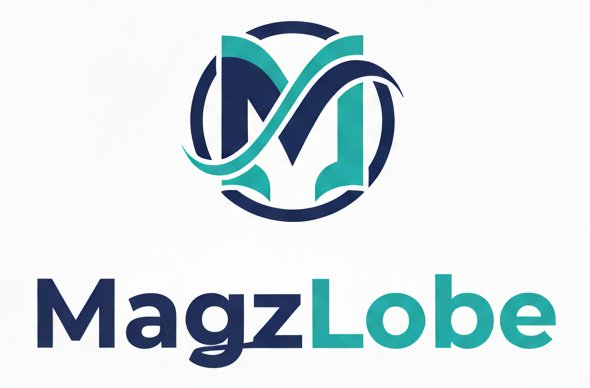Repmold — Complete Guide to Effective Mold Repair and Prevention
Introduction
Repmold is a pragmatic approach to fixing mold problems that combines repair, remediation, and prevention into a single workflow. In this article you’ll learn what repmold means, step-by-step processes (including moisture mapping and HVAC cleaning), tools like HEPA filters and infrared cameras, and real-life tips to keep your home or business mold-free.
What is repmold and why it matters (definition and core concept)
Repmold describes an integrated process: remove active fungal growth, repair the damaged structure, and apply measures to prevent recurrence. Unlike standard mold remediation that sometimes focuses only on removal, repmold emphasizes the repair of the building envelope and moisture causes so spores don’t come back. It blends fungal remediation, structural drying, and surface restoration into one coordinated effort, guided by safety standards from agencies like the EPA, CDC, OSHA, and best practices from the IICRC.
Repmold workflow: step-by-step remediation and repair
A clear repmold workflow helps homeowners and contractors stay efficient and safe. Typical stages include:
-
Assessment and fungal testing
-
Use hygrometers and infrared cameras to map moisture.
-
Collect samples for lab analysis to determine species and concentration.
-
-
Containment and safety setup
-
Establish negative pressure containment using air scrubbers with HEPA filtration.
-
Follow OSHA guidelines for personal protective equipment.
-
-
Removal of contaminated materials
-
Remove porous materials that are heavily colonized.
-
Salvageable items go through thorough cleaning and spore suppression.
-
-
Structural drying and dehumidification
-
Deploy dehumidifiers and fans for structural drying.
-
Monitor with moisture meters until safe thresholds are reached.
-
-
Surface sanitization and treatment
-
Apply biocide applications or mold-resistant coatings where appropriate.
-
Use odor neutralization for affected spaces.
-
-
Repair and restoration
-
Fix water intrusion points, roofing, or plumbing that caused the problem.
-
Restore drywall, paint, and trims using mold-resistant materials.
-
-
Post-repair verification
-
Re-test air and surfaces.
-
Ensure HVAC cleaning and filters are replaced; verify indoor air quality.
-
This structured sequence ties remediation to the underlying repairs; that’s the heart of repmold.
Tools and technology used in repmold (equipment and concepts)
Successful repmold relies on accurate diagnostics and the right tools. Common items include:
-
Infrared camera: reveals hidden moisture behind walls.
-
Hygrometer & moisture meters: track relative humidity and material moisture.
-
HEPA-filtered air scrubbers: capture airborne spores during containment.
-
Dehumidifiers: essential for structural drying and preventing regrowth.
-
Protective equipment: respirators, gloves, and suits per OSHA standards.
-
Laboratory services: for mold species identification when required.
Using these tools ensures thorough remediation and supports decisions on repair methods and biocide use.
Real-life analogy: repairing the leak, not just mopping the floor
Think of repmold like fixing a leaky roof versus mopping the puddle. If you only remove visible mold (mop), moisture causes will continue (the roof still leaks). Repmold fixes the leak (repair), dries the structure (dehumidification), and then treats the surface (sanitization). That way, the problem stays solved. This analogy helps property owners prioritize long-term solutions over quick cosmetic fixes.
When to call a certified remediator vs. DIY repmold
Small, localized mold (less than a few square feet) can sometimes be addressed by confident homeowners, using proper PPE and HEPA vacuums. However, call a certified remediator when:
-
Mold covers large areas or is in HVAC systems.
-
You suspect toxic species or have occupants with health sensitivities.
-
The source involves structural failures like extensive water intrusion.
-
You need documentation for insurance and long-term solutions.
Certified remediators follow IICRC standards and can coordinate lab testing, containment, and repairs more efficiently.
Common problems during repmold and how to avoid them
-
Incomplete drying: always monitor humidity and material moisture; stop when readings return to safe ranges.
-
Poor containment: negative pressure and HEPA filters prevent cross-contamination.
-
Ignoring HVAC: if ducts are contaminated, spores circulate—schedule professional HVAC cleaning.
-
Not repairing root cause: without fixing plumbing or leaks, mold will recur.
A checklist helps teams avoid these pitfalls and ensures the repmold job is complete.
Cost considerations and timing for repmold projects
Repmold cost varies widely: small residential fixes might be a few hundred dollars, while complex commercial jobs can run into thousands. Factors include:
-
Extent of contamination.
-
Whether structural repairs are required.
-
Need for lab testing and HVAC cleaning.
-
Local labor rates and required permits.
Typical residential repmold takes several days to a couple of weeks — assessment and drying often determine schedule length.
Prevention strategies after repmold (long-term mold control)
Preventing return is the most valuable part of repmold. Do these consistently:
-
Maintain indoor humidity between 30–50% with dehumidifiers if needed.
-
Repair roof, window, and plumbing issues promptly.
-
Keep gutters clean and directed away from the foundation.
-
Use mold-resistant materials (drywall, paints) in susceptible areas.
-
Schedule periodic HVAC inspections and replace filters regularly.
These steps preserve indoor air quality and protect your investment in the repmold process.
Case study: a homeowner’s repmold experience (short narrative)
A homeowner noticed a musty smell in a finished basement. Small black spots appeared near the laundry area. They called a certified remediator who used an infrared camera and found a hidden pipe leak behind a wall. The team set up containment, ran HEPA-filtered air scrubbers, removed affected drywall, ran dehumidifiers for five days, repaired the pipe, and replaced materials with mold-resistant board. Post-repair testing showed normal spore counts, and the homeowner installed a monitor and scheduled HVAC cleaning. This is repmold in action: remediation + repair + prevention.
Conclusion
Repmold is the smart path to lasting mold solutions: it treats the biology, repairs the structure, and prevents recurrence through moisture control and informed material choices. If you’re facing mold, start with a thorough assessment (use a hygrometer and infrared scan) and prioritize repairs that stop moisture at the source. For complex jobs, consult a certified remediator to ensure safety and compliance. Take action today—schedule an assessment and protect your indoor air quality with a comprehensive repmold plan.
Also Read: gldyql for Analysts: From Intent to Execution
FAQ — (Answering the People Also Ask questions)
What is repmold and how does it differ from standard mold remediation?
Repmold integrates remediation with repair and prevention. Standard remediation sometimes focuses only on removal; repmold ensures the building envelope and moisture sources are repaired so mold doesn’t recur.
How long does a typical repmold process take for a residential property?
A typical residential repmold takes from a few days to two weeks, depending on assessment, drying time, and repairs. Structural drying and moisture mapping often define the timeline.
Can I perform repmold myself or do I need a certified remediator?
For very small areas, homeowners with proper PPE and tools can handle it. For larger infestations, HVAC involvement, or health-sensitive occupants, hire a certified remediator following IICRC and OSHA guidance.
What tools are essential for effective repmold (HEPA, dehumidifier, hygrometer)?
Essential tools include HEPA-filtered air scrubbers, dehumidifiers, hygrometers/moisture meters, infrared cameras for hidden moisture, and appropriate PPE.
How do I prevent mold from returning after repmold and structural drying?
Maintain humidity control (30–50%), repair water intrusion immediately, use mold-resistant materials, and keep HVAC systems clean. Regular monitoring and prompt action are key.













